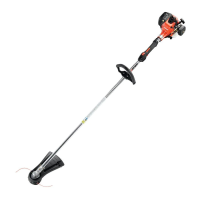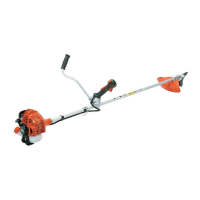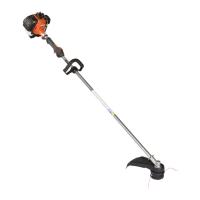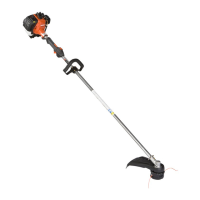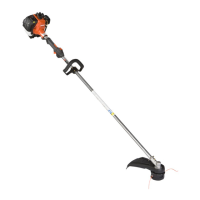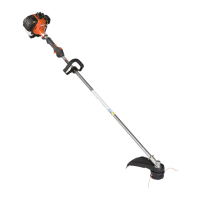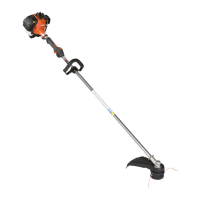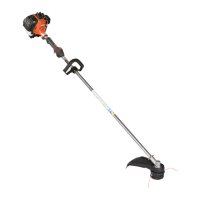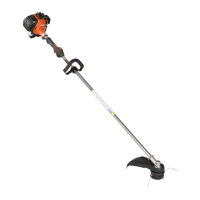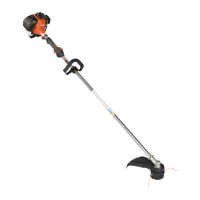SRM-2320T OPERATION
X7732278300 29
© 08/2019 ECHO Inc.
Push and Pull Forces
Push and pull forces are reactive forces that push the
equipment directly toward the operator, or that pull the
equipment directly away from the operator. These forces
are the result of cutting on the sides of the blade. The
direction of the force depends on the side of the blade
being used, and the direction of blade rotation at the point
of contact. The reactive force is in the opposite direction of
blade rotation at the contact point, regardless of where the
contact is being made. These types of reactive forces are
also called “Blade Thrust.
As shown in the illustration, a blade turning
counterclockwise will cause the equipment to pull away
from the operator if the point of cutting resistance is on
the left side of the blade. If the point of cutting resistance
is on the right side of the blade, the equipment will push
back toward the operator. In both examples, the reactive
force is in the opposite direction of blade rotation at the
contact point where resistance occurs.
Kickout
Kickout is also a reactive force caused by resistance to
cutting, but the direction of blade thrust is lateral (to the
left or right of the blade), instead of forward or back toward the operator. In
most cases, Push, Pull, and Kickout can be reduced or eliminated by:
• Using the correct blade for the cutting job
• Using properly sharpened blades
• Applying consistent, even force to the blade
during the cut
• Avoiding obstacles and ground hazards
• Using extra care when cutting harder materials
such as extremely dry brush, saplings, and
small trees
• Cutting from a stable, secure position
Blade Cutting Problems
Binding - Blades may bind in the cut if dull or forced. Binding can damage
blade, and result in blade breakage or injury from fragments and flying
debris. If a blade binds in a cut, don’t try to get it out by applying “up and
down” force to pry the cut open. Applying prying force to the blade can bend
the blade, and result in blade failure and injury.
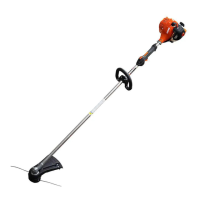
